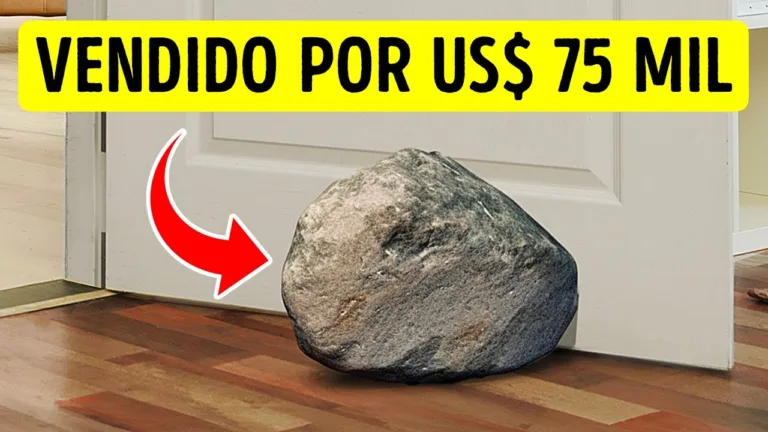PINTURA e PISO: TRANSFORMAMOS a MINI CASA!
We have water, we have electricity… but the little house, let's face it, is still ugly as hell. There's a pipe showing, it's all full of holes, we can see the beams, the blocks. So, today, we are going to lay the floor and plaster the walls. Let's transform our little house. Our mission today, then, is to cover up the little house's imperfections and make it really presentable. So with the support of Amigo Construtor, who is working on this with us, we will understand The various types of floors and coverings and how we install them. Here's what we're going to do. I'll explain this stage of the cladding work while The little house is being built. So, what I say in theory, you'll see happening In practice. The coating is a layer of material that is applied on top of the raw Construction, on top of the block, on top of the brick. Not only to make it more beautiful, but also to protect the building and hide a number Of things that are going through there, like those electrical conduits that we put in during the last video. So, let's start with the wall. Imagine that this here is the wall of our little house, these are the little blocks, They are not very aligned, there is always some margin of error there on the wall That we need to correct. This correction will be made with a material called plaster, Which is a mixture of sand, cement and water. It's very similar to concrete, but not stone. Typically, three layers are used over the wall. The first is called roughcast. This will be a mixture with plenty of water, sometimes With coarse sand, which will serve as a kind of grit so that the other layers can Stick well on top. Sometimes roughcast is also used as a finish, there are some Very rough walls for climbing vines, for example, you can use roughcast. Then comes A second layer, which is where the most material will be used, which is the plaster, Its purpose is to correct the irregularities of the wall. So here you will already have a straighter wall because it was completely filled with the first layer of plaster. On top of that, there's still a little more plaster, which is the plaster. It is Smoother than the first layer of plaster to receive the next layers. In our little house, as you might have guessed, these layers are very important because the wall is all uneven. But there is a problem, if we made these three layers, it would be a lot of work and It would be extremely difficult to work in those tight rooms. So, we joined the three into one and made a "roughcast/first and second layer of plaster" That takes care of everything more or less and it wasn't that great, but was able To hide the imperfect brickwork and protect the house.
I see the bricklayers working and they take this mortar and throw it on the wall. And it works on top… I will confess that it is not a very easy thing. I've been trying here, it's working more or less. How frustrating. It's not working. There are people who paint right on top of the plaster, but it's not the most common. In general, one coat is used to correct imperfections in the second coat. This layer can be plaster or spackle, or both together. Plaster can only be used On internal walls, okay? Because if water falls on top of the plaster, it starts To fall apart. In our case, the plaster is very good because it fills well, so, If you still have a very irregular hole left behind, you can cover it with plaster. And another advantage is that it hardens very quickly. On the other hand, spackle Is softer than plaster, it takes longer to harden, which is sometimes an advantage, Because you want to have some time to work with, you're meticulous up there and stuff. You can even use spackle to correct any imperfections in the plaster, which is what we did. And then, I have to confess to you that passing this on the entire house would be a hard working. So, we did this upstairs, in the upstairs rooms. On the outside and below, we used A trick that I'll tell you about in a moment. After all of this is ready, comes A delightful step in the work, which is sanding the walls. And then, a white powder goes flying everywhere, which is terrible, the neighbors Are passionately in love with those who are at this stage of the work. But we can't stop sanding, firstly because that's what will give the wall a super Smooth surface and secondly because we remove several things that are there that Can disturb the painting. If you paint over a dirty surface, for example, the paint Will come off later. The floor also has several layers. In our little house, we Will have a layer down there in contact with the ground, which is the concrete. It Has cement, water, stone and a steel mesh structure. Just as you might have imagined, this structure is a bit irregular, you need to adjust It, in a way that's similar to plastering, to be able to lay the floor on top. This layer is sand with cement and is called subfloor. It is there that we do something very important, which is fitting the drains. When you're taking a shower, the water needs to go down the drain. If this instalation Is not done well, you'll end up with a small pond in some corner of the bathroom, and the water will not go down. And now comes the fun part of the work, which is choosing the materials you're going To put on top of all this. And it's not just color, no. On the floor, you'll have
Another giant collection of different materials to place. And the best way for us to choose is to go to the Amigo Construtor website, which Is a giant online building material store. Check it out, here you can see the details of each material, choose color, price… All of this easily at the speed of a click without having to spend hours walking around a physical store. And what did we choose for our little house? Upstairs, in the bedrooms, we will fit carpet, which is like a rug glued to the floor. Carpet has a big disadvantage, it accumulates dirt and is difficult to clean. So, you're going to have to use the vacuum cleaner on it a lot. The advantage is that it is a warm, fluffy material that also has a certain acoustic Treatment, the sound is very pleasant in there. And an even bigger advantage for us is that it is very easy to install. In the bathroom and on the whole floor below, we're going to use tiled floors, we're going to use porcelain. It's a material very similar to tile, but it's bigger, more resistant. A very big advantage of it is that it is extremely easy to clean, you can wash it, Wipe it with a cloth that does not spoil. In our case, there wouldn't be a tiny floor for us to put inside the little house. We could cut a floor, perforate it, but it would be too high and cutting this type of material is not very easy. But there are some inserts that people tend to use in the bathroom, which can be made Of glass or porcelain, which imitate a tiny floor very well. And that's what we're using in the little house. In the room, there's a brown one. In the kitchen, bathroom and service area, we are using white. In a real house, we would use a super adherent layer of plaster here on top of the Subfloor and we would put porcelain on top, it sticks on top of this plaster. In the miniature house, if we were to install this extra layer, it would be too high, It would be a lot of work and it was unnecessary. So, we solved everything with hot glue, which is what we use to solve everything here in Manual do Mundo. Don't do this in a real house that won't work out very well, okay? Laying tile in this little bathroom is by far the most difficult part of this stage of the work. This here is too misaligned, we're going to have to get rid of it. You don't need To tile the entire bathroom, right? It already has two tiled walls, there's a floor In there… Let's make the other normal walls. Between the ceramic tiles, we need To add a bit of grout, it's a putty that covers those gaps that are between the tiles. Here's a tip, even if you live in an apartment, it's always good to check if the grout
In the shower area is properly installed because if there's a little hole where the Grout was released, the water gets in there and it seeps through the apartment below. It is one of the most common problems in condominiums. Finally, the time has come For the last layer, the one that people spend days and months on, that is, if you Spend months choosing it, there will be a problem with the date of the work. But people spend a lot of time choosing which paint to use. In general, in a house, Two types of paint are mainly used, PVA and acrylic. PVA is usually used indoors. In our little house, we decided to paint the inside in a very light gray. And now it's time to confess some little tricks we used. Applying all these layers to the interior walls, especially in the kitchen where it Was almost impossible to fit your hand into, would make this little house become a sinking ship for the Manual do Mundo. At least four years for us to finish. So, we decided to do something that I also Don't recommend you do at home, but we already made a Manual do Mundo kitchen once. We applied a layer of paint on top of the cardboard, and we applied the cardboard to the wall to emulate paint. Of course, it's extremely fragile if you do it in a real house, but I'll tell you That it emulates it very well, the wall is extremely smooth and what's most important For our little house is that it looks really good and emulates a real house . The other acrylic paint is usually used on the outside of the house because it is Waterproof, it is also more resistant. In our little house, we also made one. Usually, On the outside, a type of spackle is applied, which is acrylic putty, which also Resists water better. And another thing that is also common is that you apply some Primer under the paint, this makes the paint stick better to the wall, so you use Less paint. And we decided not to do any of that because, after all, our house won't Stand the test of time and we wanted a slightly more rustic finish on the outside. So, we are left without these two layers here. The paint goes straight on top of The plaster. As you can see, it doesn't take very well, so we have to apply several Coats to make sure the cement doesn't show underneath. And the color we chose is this straw shade, it's white with a light touch of brown. Look, I'm going to tell you that without a doubt, this phase was the one that took The most work because we already have to be very careful to make sure that it turns out beautiful. But I think it is! Satisfied Amigo Construtor, it already makes you want to live In the little house. I mean, I think the roof and windows are still missing, right? But this will be the last episode that will be the end of our saga with Amigo Construtor. Keep an eye out, okay? For those who missed the previous episode of the construction
Of the little house, we installed the electrics and here's a spoiler for you: we Are taking it seriously, there is even a working socket. Check it out!








 É possível encontrar um meteorito por acidente?
É possível encontrar um meteorito por acidente? 